Abstract
1. Halogen analogues of p-nitrobenzoate and benzoate were oxidized by washed cells of Nocardia erythropolis. 2. The oxidation of 2-fluoro-4-nitrobenzoate ceased at the level of acetate, and fluoroacetate was found in the incubation medium and particularly in hot-ethanolic extracts of the cells. 3. Several fluorine-containing intermediates were detected and 2-fluoroprotocatechuate was identified as one of them. 4. The nitro group was also reduced by the organism, as evidenced by the formation of 4-amino-2-fluorobenzoate. 5. Extracts of N. erythropolis activated fluoroacetate and condensed the resulting fluoroacetyl-CoA with oxaloacetate to form fluorocitrate. This product was a very powerful inhibitor of citrate metabolism by guinea-pig kidney homogenates and of the aconitase also present in the bacterial extracts. The inhibitions effected by synthetic fluorocitrate and the natural product were comparable. 6. 2-Fluoro-4-nitrobenzoate had negligible mammalian toxicity. 7. The isolation of fluoroacetate as a product of 2-fluoro-4-nitrobenzoate oxidation implies that the aromatic ring in this bacterium must be degraded via a γ-carboxymuconolactone; fluoroacetate cannot arise by metabolism through the isomeric β-carboxymuconolactone.
Full text
PDF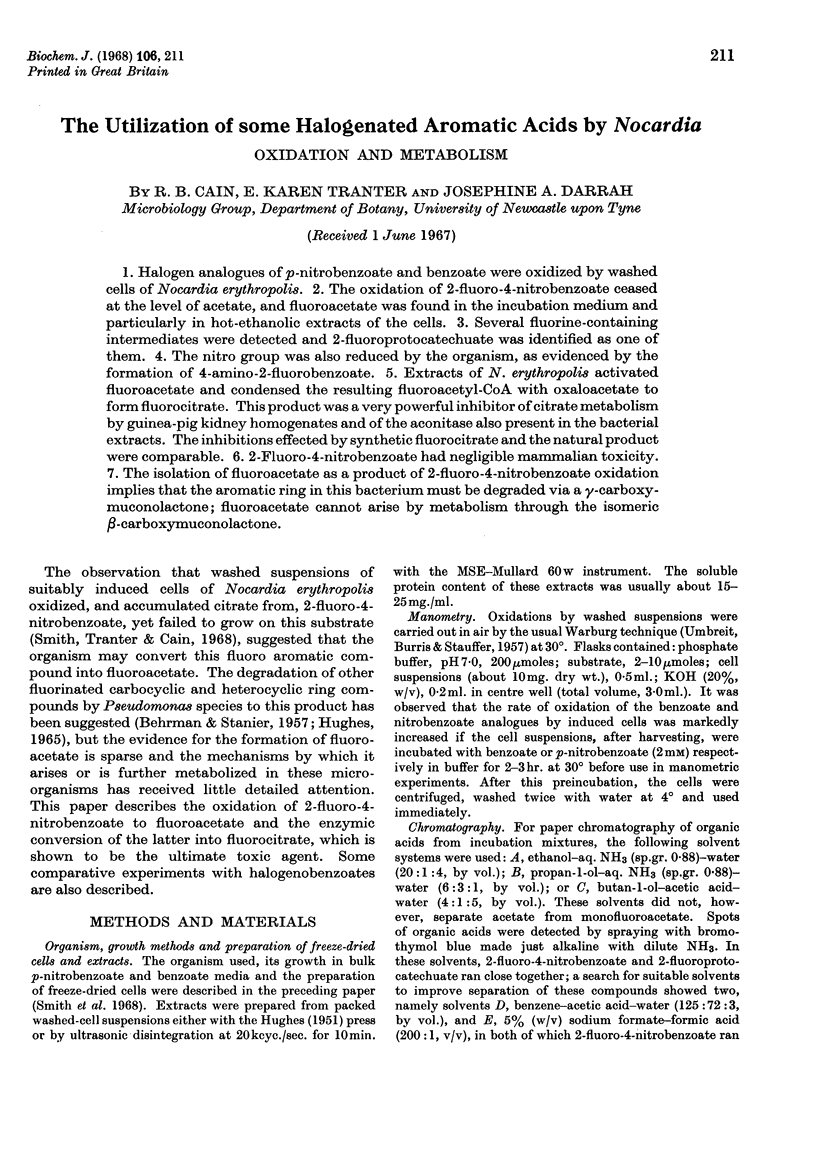
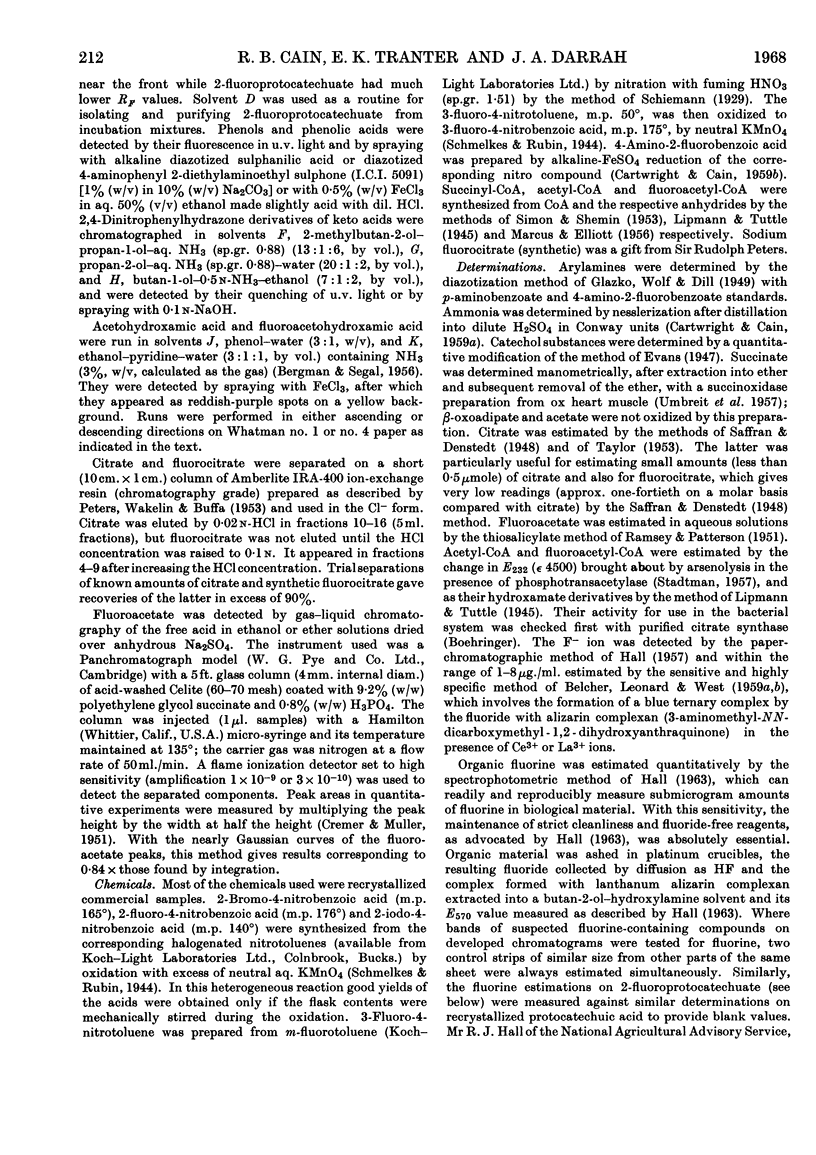
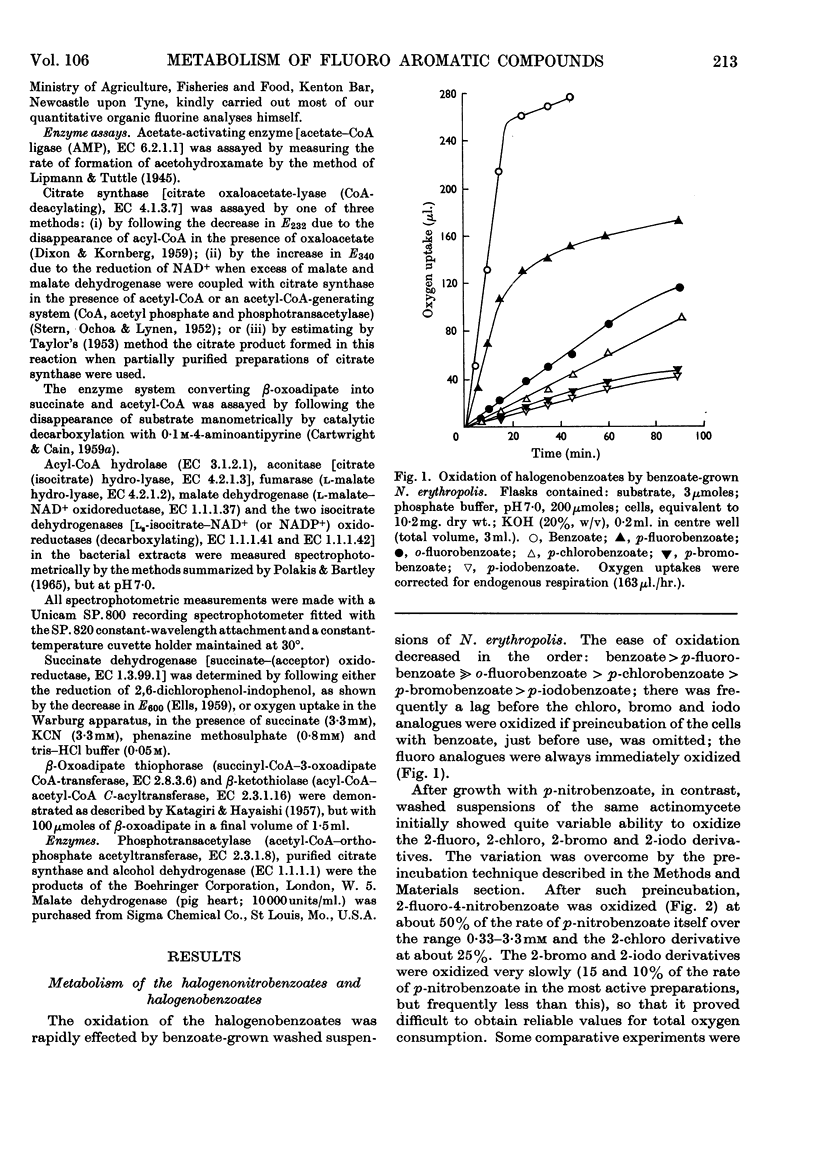
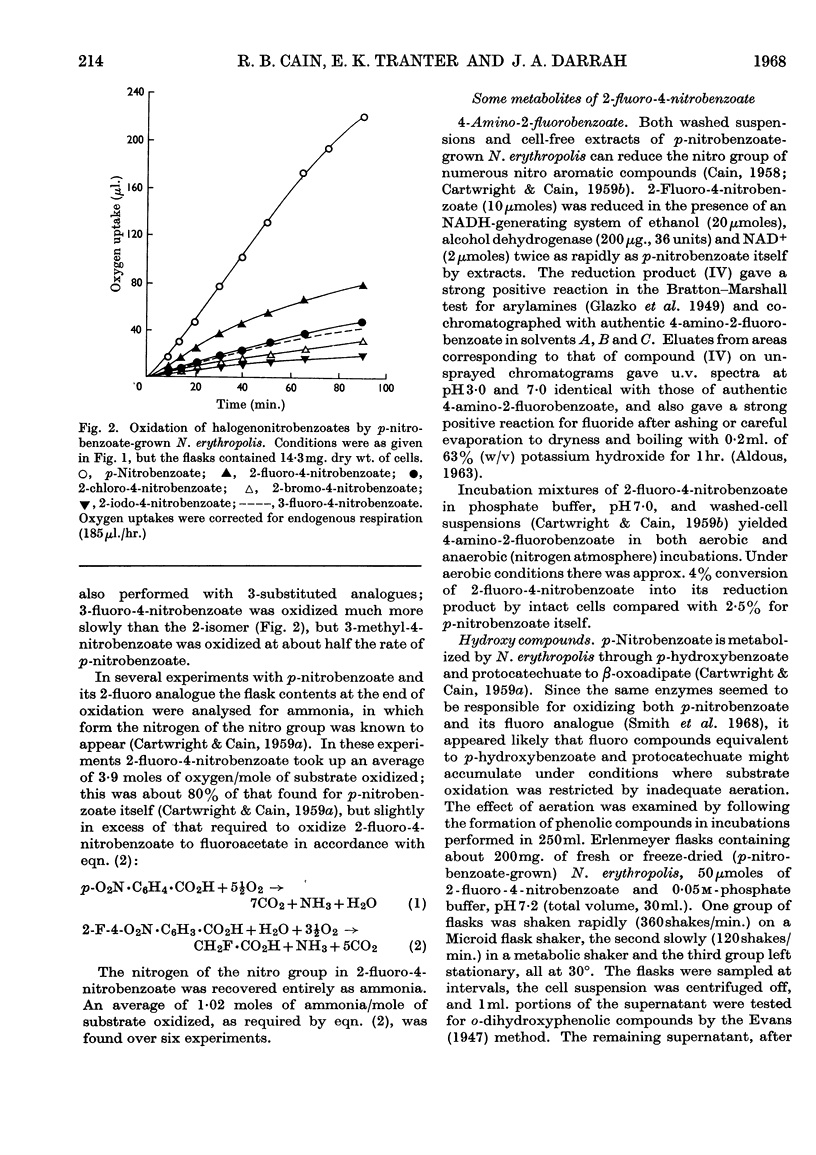
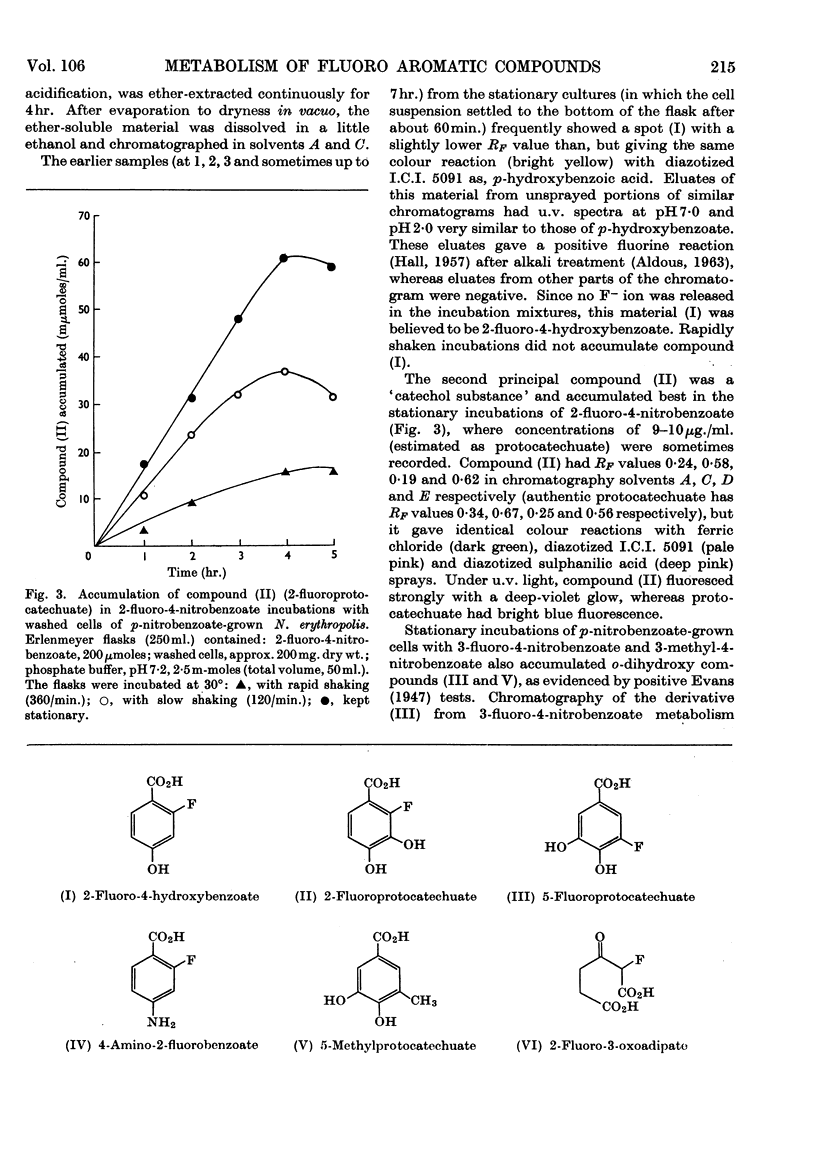
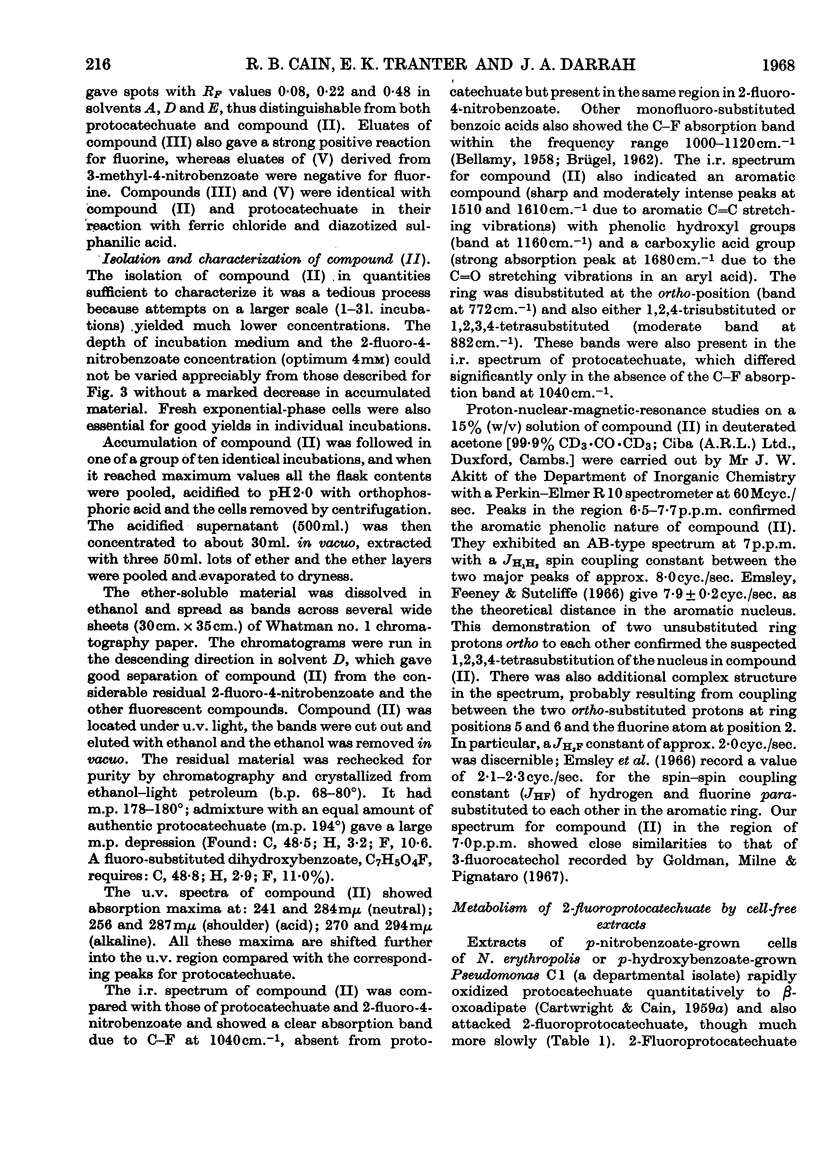
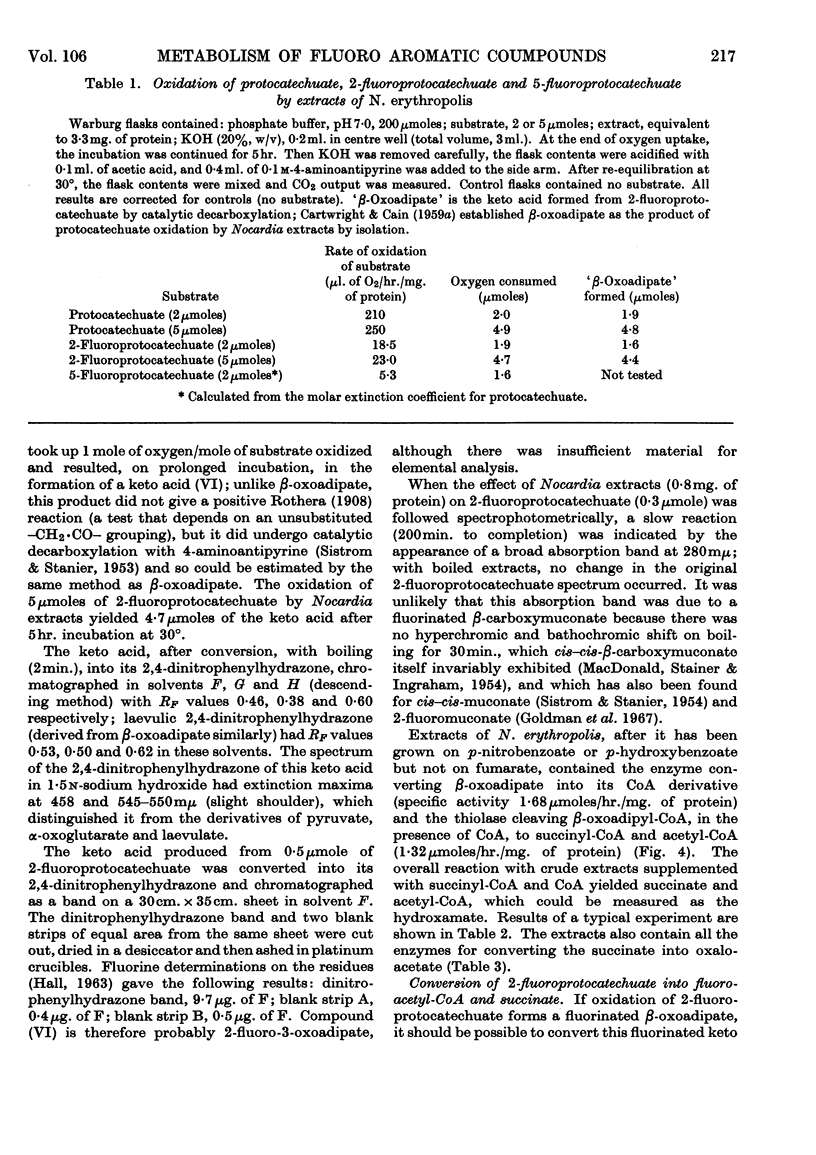
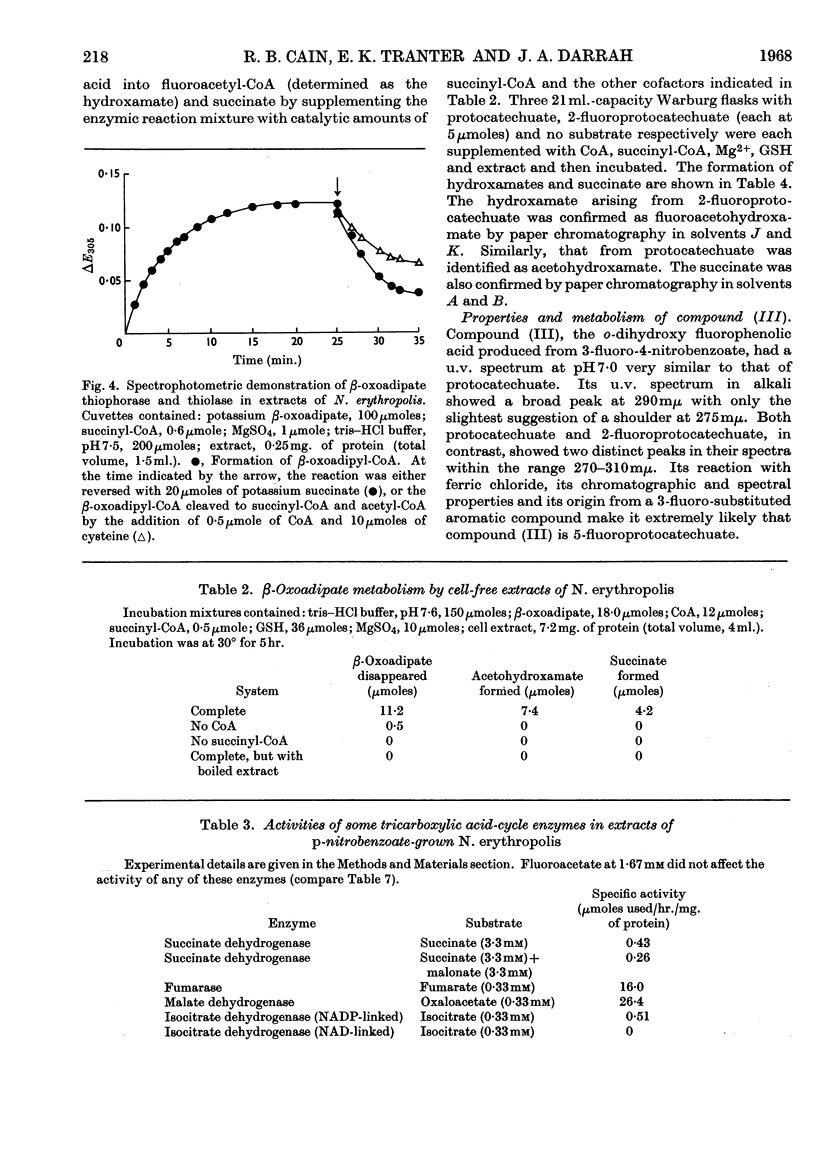
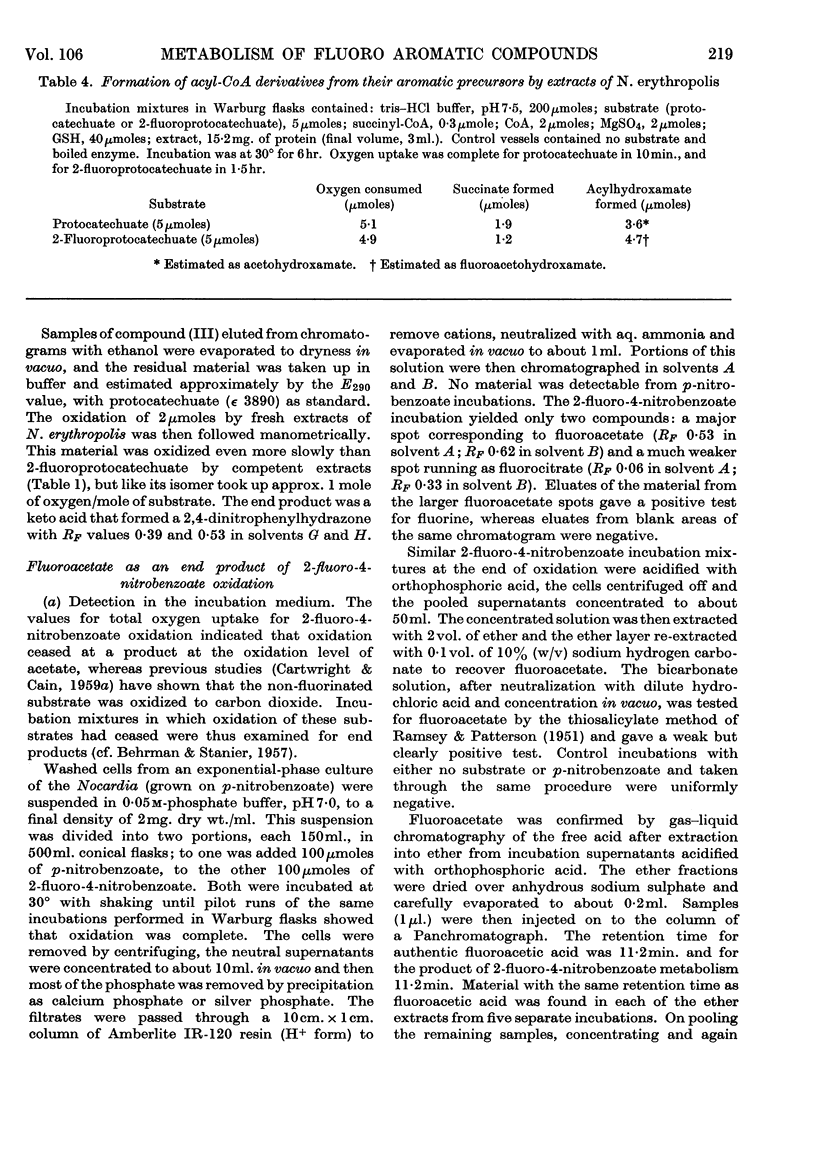
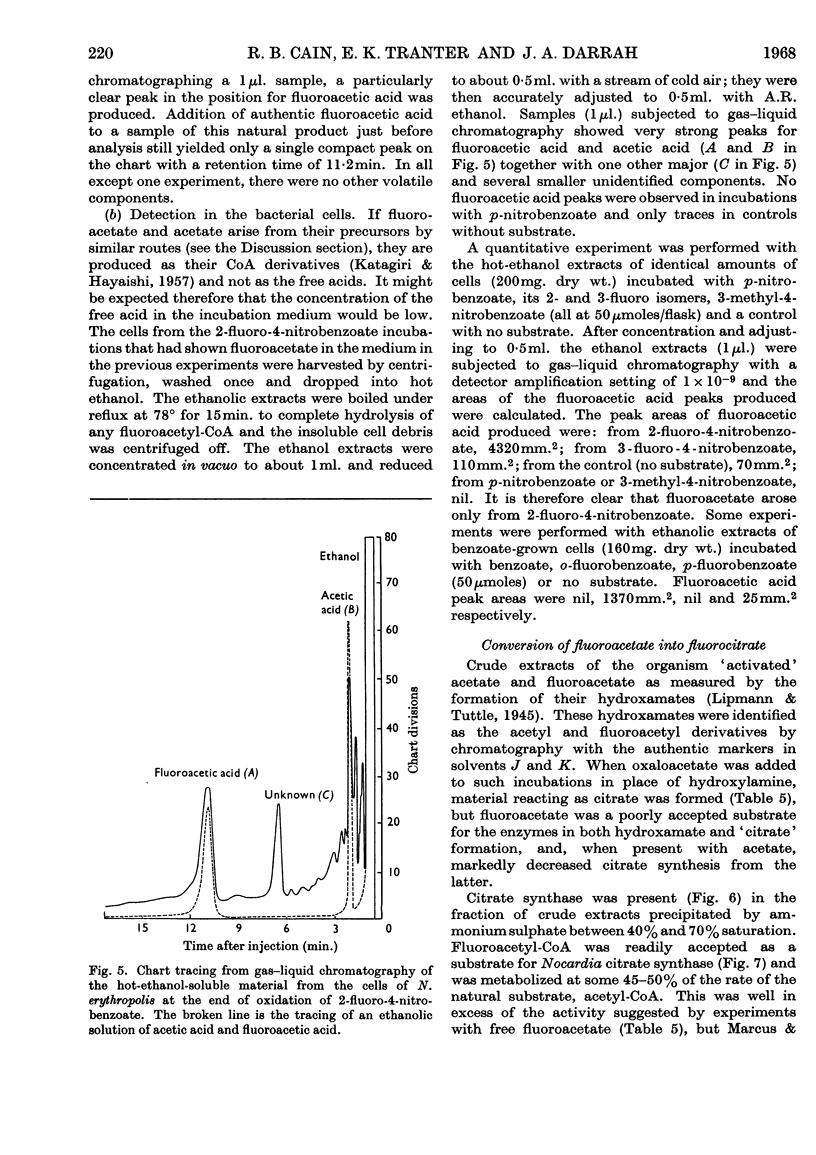
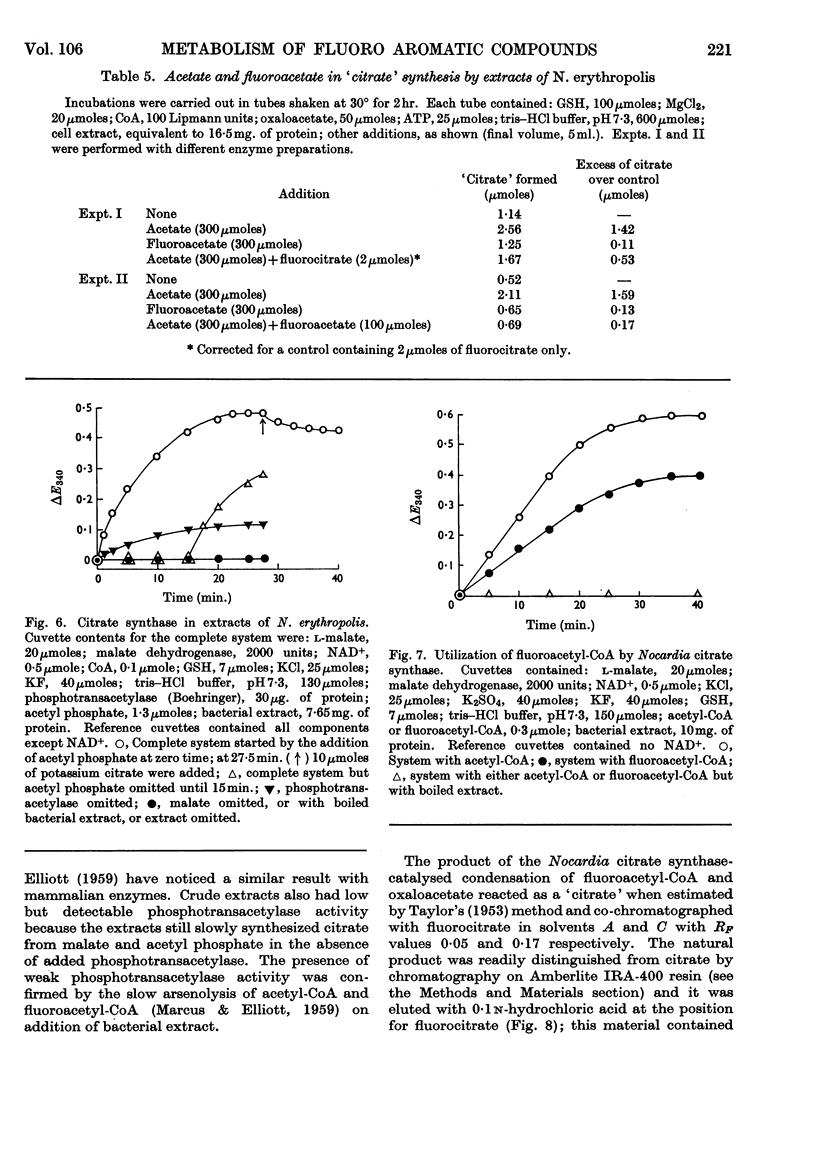
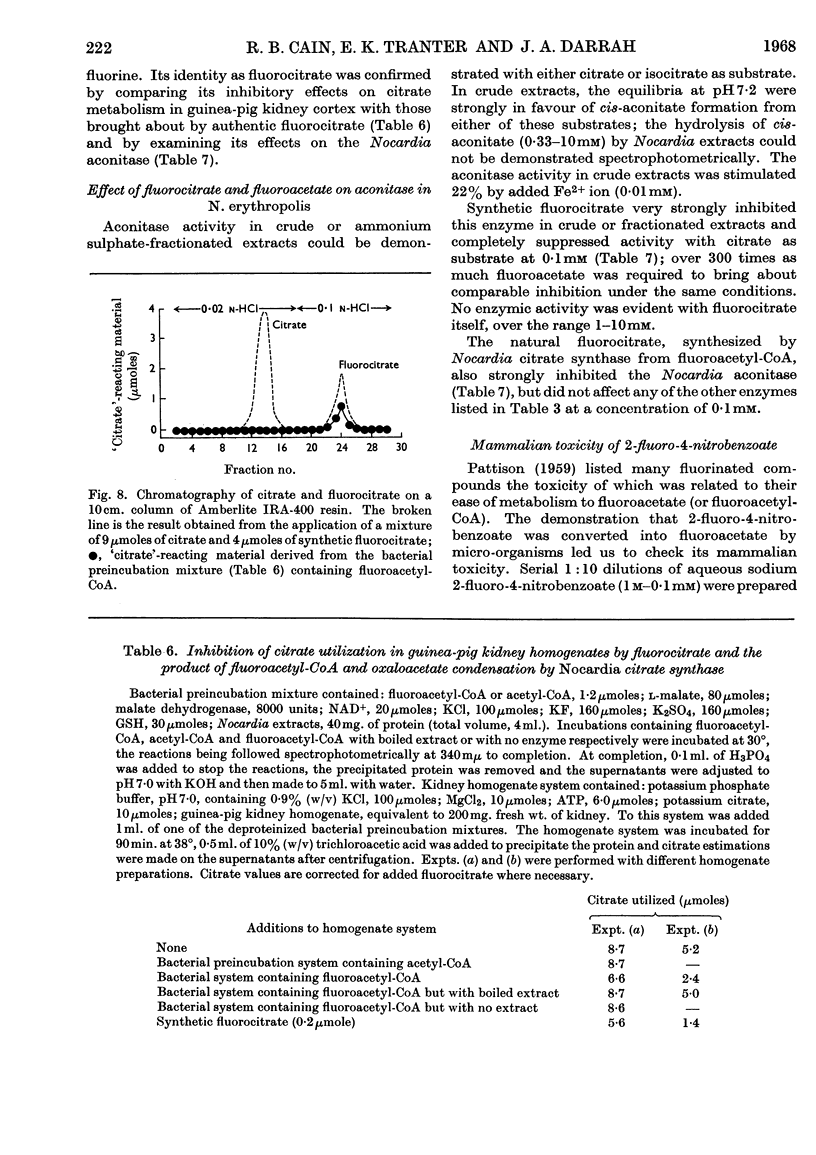
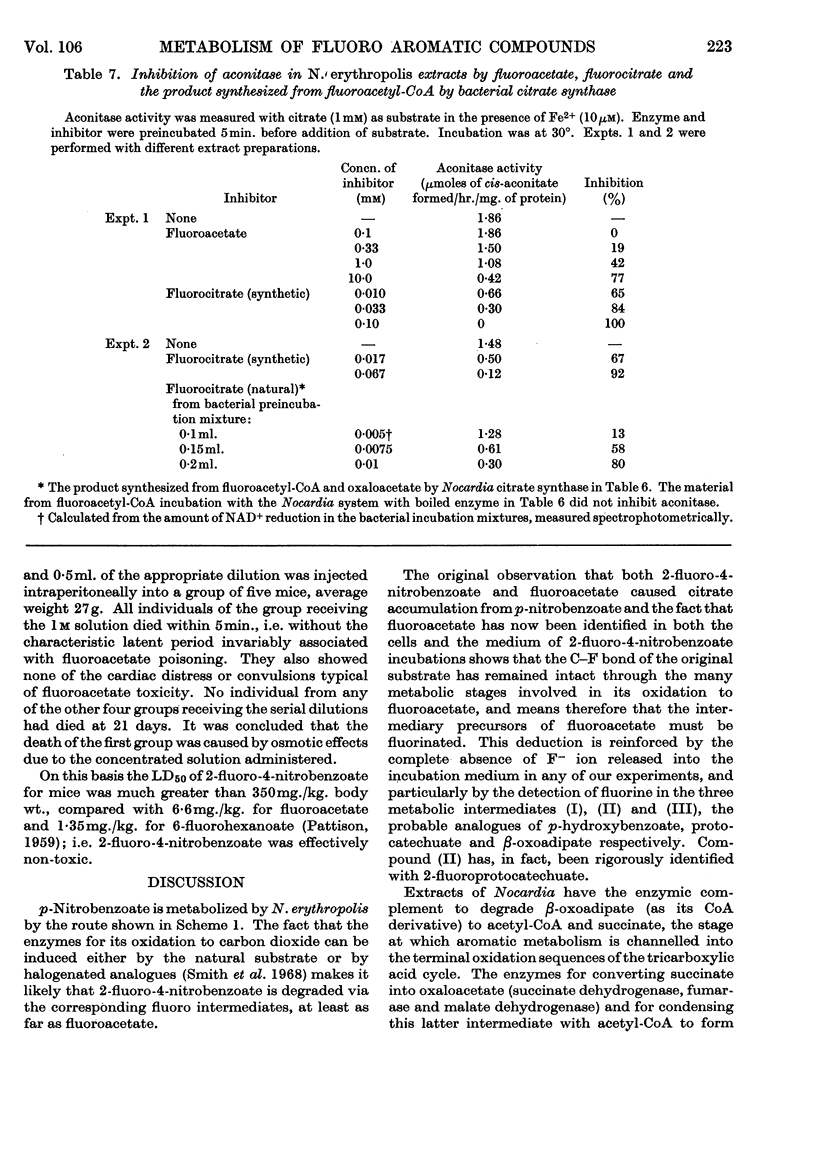
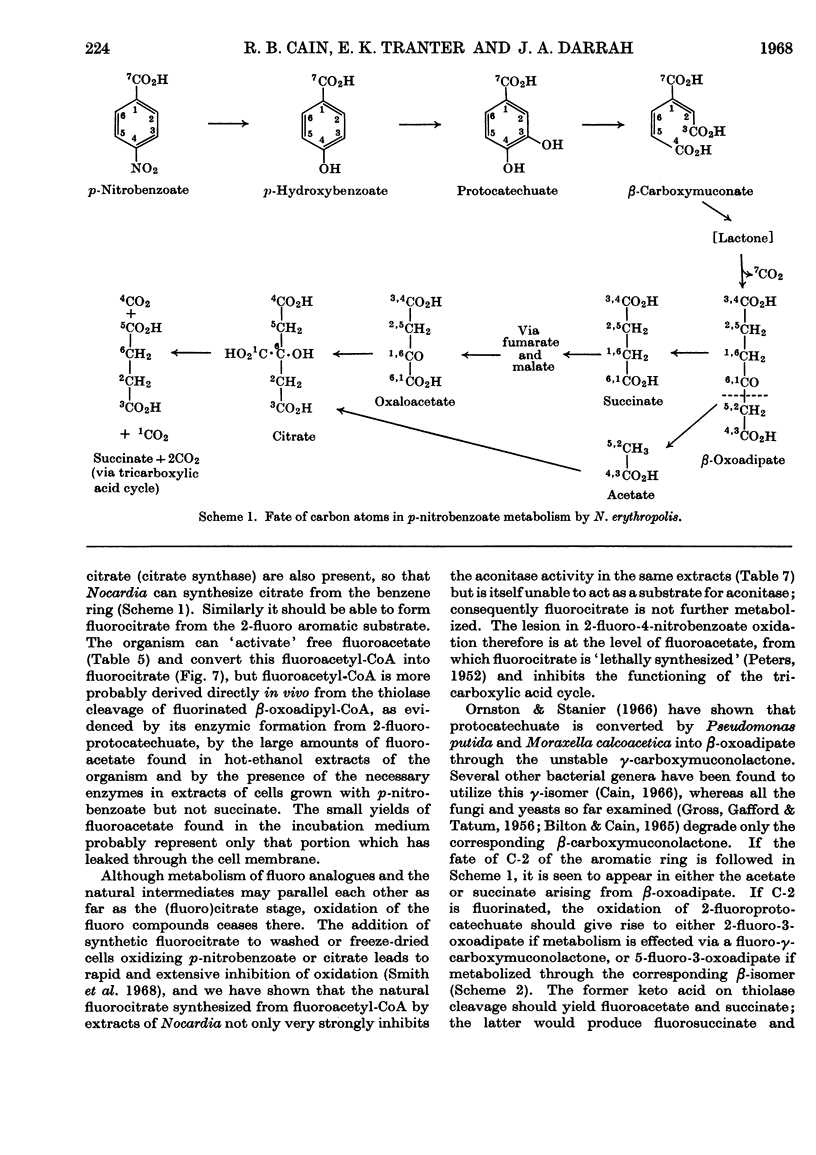
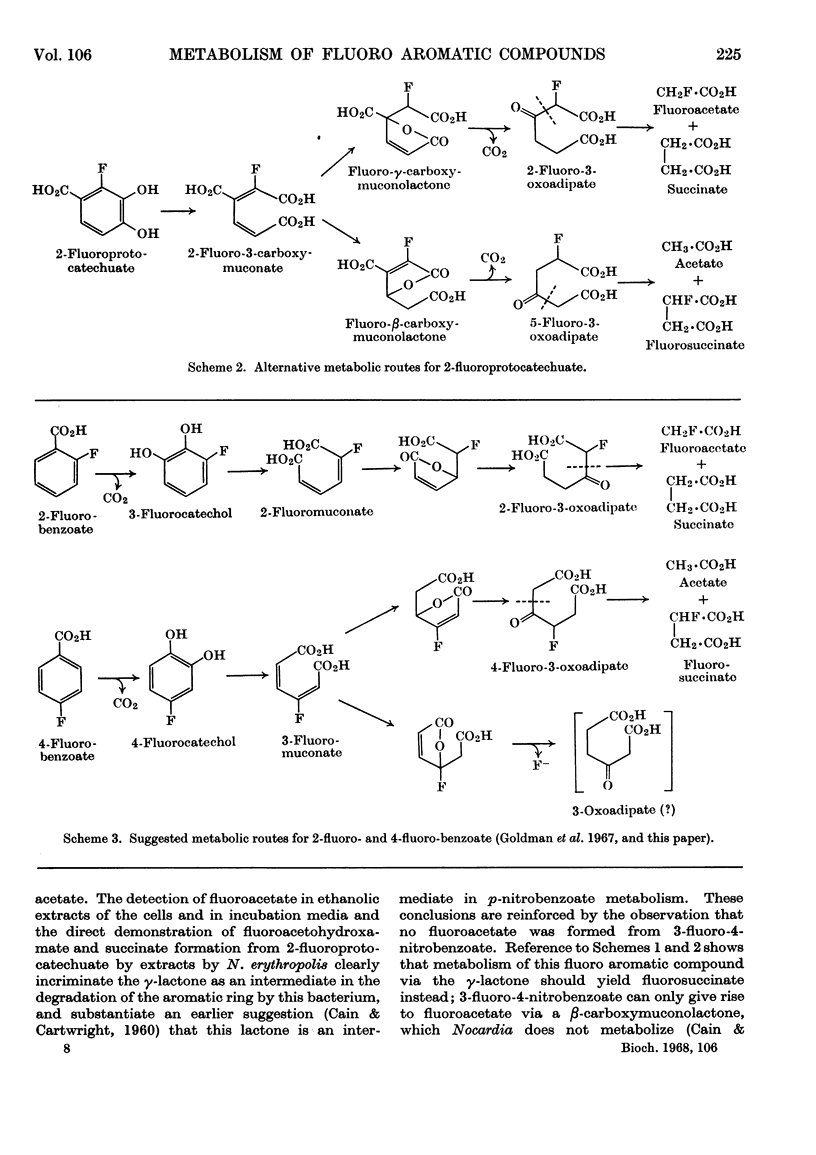
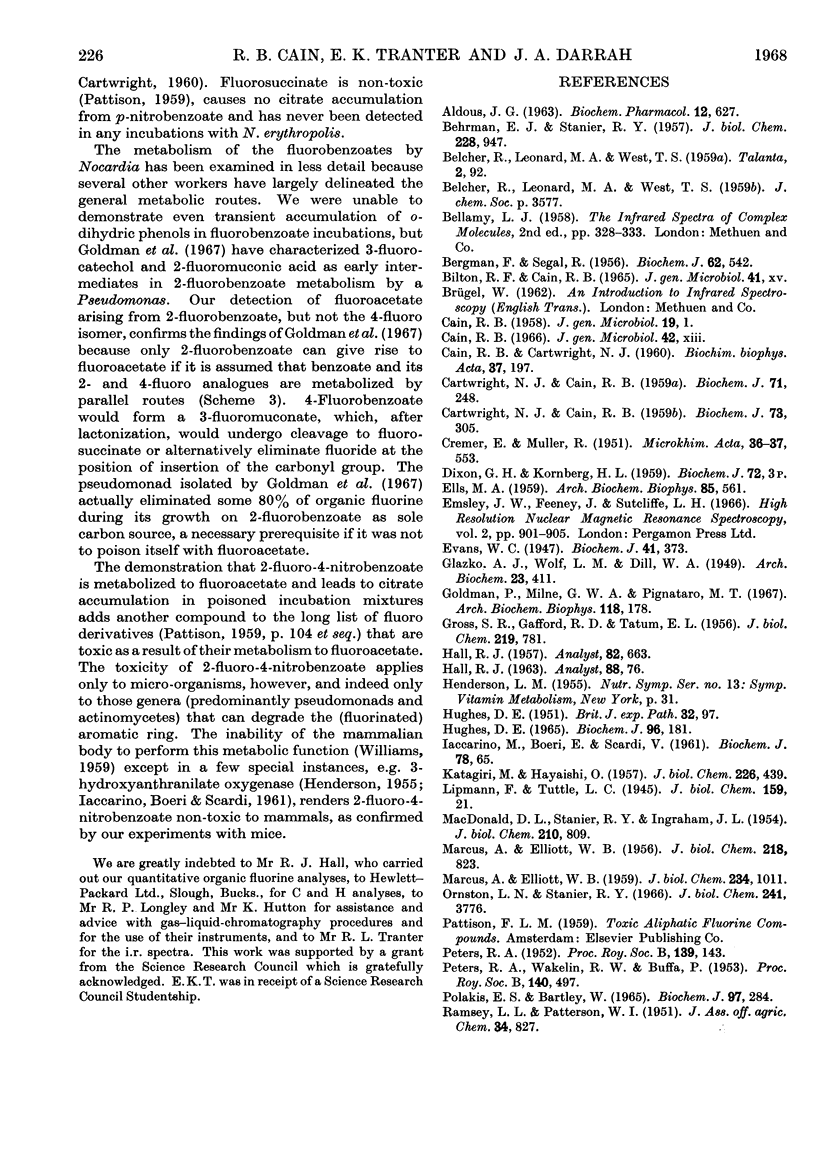
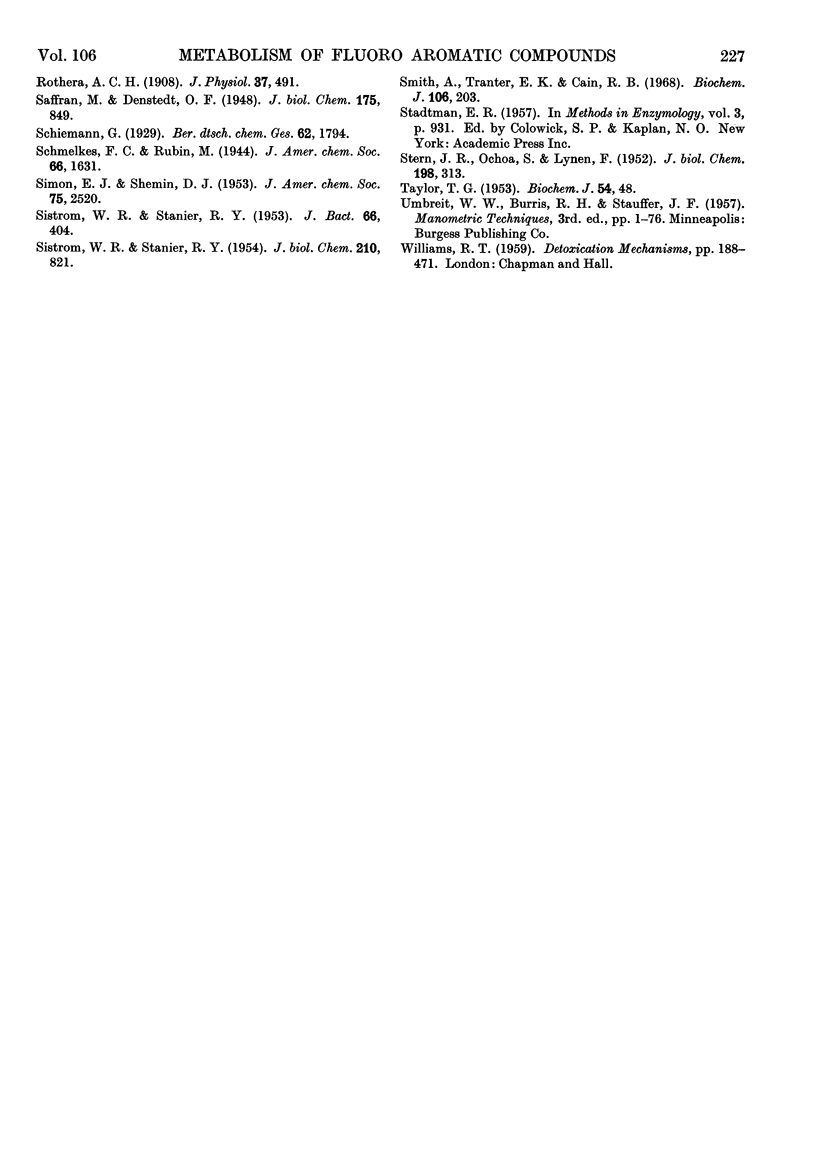
Selected References
These references are in PubMed. This may not be the complete list of references from this article.
- ALDOUS J. G. The nature of the metabolites of fluoroacetic acid in bakers' yeast. Biochem Pharmacol. 1963 Jul;12:627–632. doi: 10.1016/0006-2952(63)90037-6. [DOI] [PubMed] [Google Scholar]
- BEHRMAN E. J., STANIER R. Y. Observations on the oxidation of halogenated nicotinic acids. J Biol Chem. 1957 Oct;228(2):947–953. [PubMed] [Google Scholar]
- BERGMANN F., SEGAL R. The separation and determination of microquantities of lower aliphatic acids, including fluoroacetic acid. Biochem J. 1956 Apr;62(4):542–546. doi: 10.1042/bj0620542. [DOI] [PMC free article] [PubMed] [Google Scholar]
- CAIN R. B., CARTWRIGHT N. J. On the properties of some aromatic ring-opening enzymes of species of the genus Nocardia. Biochim Biophys Acta. 1960 Jan 15;37:197–213. doi: 10.1016/0006-3002(60)90225-0. [DOI] [PubMed] [Google Scholar]
- CAIN R. B. The microbial metabolism of nitro-aromatic compounds. J Gen Microbiol. 1958 Aug;19(1):1–14. doi: 10.1099/00221287-19-1-1. [DOI] [PubMed] [Google Scholar]
- CARTWRIGHT N. J., CAIN R. B. Bacterial degradation of the nitrobenzoic acids. 2. Reduction of the nitro group. Biochem J. 1959 Oct;73:305–314. doi: 10.1042/bj0730305. [DOI] [PMC free article] [PubMed] [Google Scholar]
- CARTWRIGHT N. J., CAIN R. B. Bacterial degradation of the nitrobenzoic acids. Biochem J. 1959 Feb;71(2):248–261. doi: 10.1042/bj0710248. [DOI] [PMC free article] [PubMed] [Google Scholar]
- ELLS H. A. A colorimetric method for the assay of soluble succinic dehydrogenase and pyridinenucleotide-linked dehydrogenases. Arch Biochem Biophys. 1959 Dec;85:561–562. doi: 10.1016/0003-9861(59)90527-2. [DOI] [PubMed] [Google Scholar]
- Evans W. C. Oxidation of phenol and benzoic acid by some soil bacteria. Biochem J. 1947;41(3):373–382. doi: 10.1042/bj0410373. [DOI] [PMC free article] [PubMed] [Google Scholar]
- GROSS S. R., GAFFORD R. D., TATUM E. L. The metabolism of protocatechuic acid by Neurospora. J Biol Chem. 1956 Apr;219(2):781–796. [PubMed] [Google Scholar]
- HUGHES D. E. A press for disrupting bacteria and other micro-organisms. Br J Exp Pathol. 1951 Apr;32(2):97–109. [PMC free article] [PubMed] [Google Scholar]
- HUGHES D. E. THE METABOLISM OF HALOGEN-SUBSTITUTED BENZOIC ACIDS BY PSEUDOMONAS FLUORESCENS. Biochem J. 1965 Jul;96:181–188. doi: 10.1042/bj0960181. [DOI] [PMC free article] [PubMed] [Google Scholar]
- IACCARINO M., BOERI E., SCARDI V. Preparation of purified 3-hydroxyanthranilic acid oxidase from rat and ox liver. Biochem J. 1961 Jan;78:65–69. doi: 10.1042/bj0780065. [DOI] [PMC free article] [PubMed] [Google Scholar]
- KATAGIRI M., HAYAISHI O. Enzymatic degradation of beta-ketoadipic acid. J Biol Chem. 1957 May;226(1):439–448. [PubMed] [Google Scholar]
- MACDONALD D. L., STANIER R. Y., INGRAHAM J. L. The enzymatic formation of beta-carboxymuconic acid. J Biol Chem. 1954 Oct;210(2):809–820. [PubMed] [Google Scholar]
- MARCUS A., ELLIOTT W. B. Enzymatic reactions of fluoroacetate and fluoroacetyl coenzyme A. J Biol Chem. 1956 Feb;218(2):823–830. [PubMed] [Google Scholar]
- MARCUS A., ELLIOTT W. B. Enzymatic reactions of fluoroacetyl phosphate. J Biol Chem. 1959 May;234(5):1011–1014. [PubMed] [Google Scholar]
- Ornston L. N., Stanier R. Y. The conversion of catechol and protocatechuate to beta-ketoadipate by Pseudomonas putida. J Biol Chem. 1966 Aug 25;241(16):3776–3786. [PubMed] [Google Scholar]
- PETERS R. A. Lethal synthesis. Proc R Soc Lond B Biol Sci. 1952 Feb 28;139(895):143–170. doi: 10.1098/rspb.1952.0001. [DOI] [PubMed] [Google Scholar]
- PETERS R., WAKELIN R. W. Biochemistry of fluoroacetate poisoning; the isolation and some properties of the fluorotricarboxylic acid inhibitor of citrate metabolism. Proc R Soc Lond B Biol Sci. 1953 Jan 15;140(901):497–507. doi: 10.1098/rspb.1953.0004. [DOI] [PubMed] [Google Scholar]
- Polakis E. S., Bartley W. Changes in the enzyme activities of Saccharomyces cerevisiae during aerobic growth on different carbon sources. Biochem J. 1965 Oct;97(1):284–297. doi: 10.1042/bj0970284. [DOI] [PMC free article] [PubMed] [Google Scholar]
- Rothera A. C. Note on the sodium nitro-prusside reaction for acetone. J Physiol. 1908 Dec 15;37(5-6):491–494. doi: 10.1113/jphysiol.1908.sp001285. [DOI] [PMC free article] [PubMed] [Google Scholar]
- SISTROM W. R., STANIER R. Y. The mechanism of catechol oxidation by Mycobacterium butyricum. J Bacteriol. 1953 Oct;66(4):404–406. doi: 10.1128/jb.66.4.404-406.1953. [DOI] [PMC free article] [PubMed] [Google Scholar]
- SISTROM W. R., STANIER R. Y. The mechanism of formation of beta-ketoadipic acid by bacteria. J Biol Chem. 1954 Oct;210(2):821–836. [PubMed] [Google Scholar]
- STERN J. R., OCHOA S., LYNEN F. Enzymatic synthesis of citric acid. V. Reaction of acetyl coenzyme A. J Biol Chem. 1952 Sep;198(1):313–321. [PubMed] [Google Scholar]
- Smith A., Tranter E. K., Cain R. B. The utilization of some halogenated aromatic acids by Nocardia. Effects on growth and enzyme induction. Biochem J. 1968 Jan;106(1):203–209. doi: 10.1042/bj1060203. [DOI] [PMC free article] [PubMed] [Google Scholar]
- TAYLOR T. G. A modified procedure for the microdetermination of citric acid. Biochem J. 1953 Apr;54(1):48–49. doi: 10.1042/bj0540048. [DOI] [PMC free article] [PubMed] [Google Scholar]


